
The Heartbeat of Da Nang: Hai Chau District
Explore the vibrant heart of Da Nang: Hai Chau District, where traditional charm meets modern dynamism, offering a unique blend of culture, history, and culinary delights.
Nestled in the vibrant city of Da Nang, Hai Chau District acts as the cultural and economic hub of the region. This bustling neighbourhood offers a harmonious blend of traditional Vietnamese charm and modern amenities, making it a must-visit destination for any traveler looking to explore the essence of Da Nang. Start your journey at the Han Market, a lively spot where you can immerse yourself in local culture. Vendors sell everything from fresh produce to unique souvenirs, offering a sensory overload of sights, sounds, and smells. Just a short walk away, you’ll find the iconic Dragon Bridge. With its contemporary design and nightly light shows, this stunning piece of architecture is a testament to the district’s modern spirit. For history enthusiasts, the Da Nang Museum provides deep insights into the region's past, showcasing artifacts that date back centuries. Art lovers will appreciate the Cham Museum, home to the world’s largest collection of Cham sculptures. These relics offer a fascinating glimpse into the ancient Cham civilization that once thrived in central Vietnam. Hai Chau District is also a culinary paradise. From street food stalls serving delicious bánh mì and phở to upscale restaurants offering exquisite Vietnamese cuisine, your taste buds are in for a treat. Don’t miss out on a stroll along Bach Dang Street, a riverside promenade perfect for evening walks, where you can enjoy the cool breeze and twinkling city lights. Whether you’re a history buff, a foodie, or a casual traveler, Hai Chau District provides a rich, multifaceted experience that captures the essence of Da Nang. Its mix of the old and the new, the traditional and the contemporary, ensures that there’s something for everyone.
Local tips in Hai Chau District
- Visit Han Market early in the morning for the freshest produce and best deals.
- Catch the Dragon Bridge light show, which happens every weekend night at 9 PM.
- Wear comfortable shoes as you will likely do a lot of walking to explore all the attractions.
- Try local street food but make sure it is from popular and clean stalls.
- Use the pedestrian-friendly Bach Dang Street for a relaxing evening walk along the river.
- Consider hiring a local guide for a more in-depth understanding of the historical sites.
The Heartbeat of Da Nang: Hai Chau District
Nestled in the vibrant city of Da Nang, Hai Chau District acts as the cultural and economic hub of the region. This bustling neighbourhood offers a harmonious blend of traditional Vietnamese charm and modern amenities, making it a must-visit destination for any traveler looking to explore the essence of Da Nang. Start your journey at the Han Market, a lively spot where you can immerse yourself in local culture. Vendors sell everything from fresh produce to unique souvenirs, offering a sensory overload of sights, sounds, and smells. Just a short walk away, you’ll find the iconic Dragon Bridge. With its contemporary design and nightly light shows, this stunning piece of architecture is a testament to the district’s modern spirit. For history enthusiasts, the Da Nang Museum provides deep insights into the region's past, showcasing artifacts that date back centuries. Art lovers will appreciate the Cham Museum, home to the world’s largest collection of Cham sculptures. These relics offer a fascinating glimpse into the ancient Cham civilization that once thrived in central Vietnam. Hai Chau District is also a culinary paradise. From street food stalls serving delicious bánh mì and phở to upscale restaurants offering exquisite Vietnamese cuisine, your taste buds are in for a treat. Don’t miss out on a stroll along Bach Dang Street, a riverside promenade perfect for evening walks, where you can enjoy the cool breeze and twinkling city lights. Whether you’re a history buff, a foodie, or a casual traveler, Hai Chau District provides a rich, multifaceted experience that captures the essence of Da Nang. Its mix of the old and the new, the traditional and the contemporary, ensures that there’s something for everyone.
Iconic landmarks you can’t miss
Da Nang Museum of Cham Sculpture
Explore the Da Nang Museum of Cham Sculpture, where ancient artistry meets rich cultural history in the heart of Vietnam.

Sun Wheel
Discover the stunning views and adventure of the Sun Wheel in Da Nang, where excitement meets breathtaking scenery and unforgettable experiences await.

Đà Nẵng Museum
Explore the rich history and vibrant culture of Vietnam at Đà Nẵng Museum, a must-visit destination for every traveler.

Ho Chi Minh Museum
Discover the legacy of Ho Chi Minh and delve into Vietnam's rich history at the Ho Chi Minh Museum in Da Nang, a captivating cultural destination.
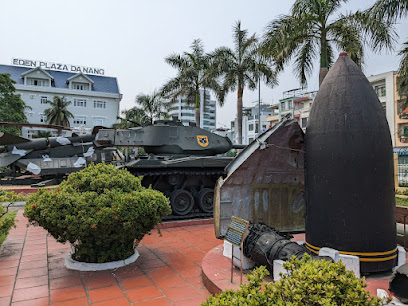
Da Nang Fresco Village
Explore the stunning murals and vibrant street art of Da Nang Fresco Village, a unique cultural experience in Vietnam's artistic heart.

Dragon Bridge
Discover the Dragon Bridge in Da Nang, Vietnam: a stunning blend of modern engineering and cultural heritage, illuminated at night and breathing fire on weekends.

September 2 Monument
Explore the September 2 Monument in Da Nang, a significant historical landmark reflecting Vietnam's journey towards independence and resilience.

Hai Chau Village Hall
Immerse yourself in the local culture at Hai Chau Village Hall, a charming tourist attraction in the heart of Da Nang, Vietnam.

Dien Hai citadel relics
Explore the historic Dien Hai Citadel Relics in Da Nang, a captivating blend of culture and history set against stunning natural landscapes.
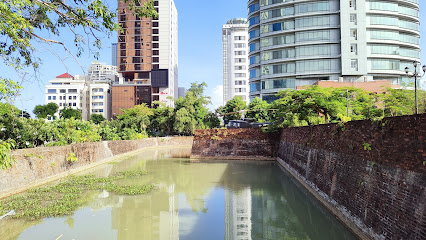
Dragon fire show
Experience the enchanting Dragon Fire Show in Da Nang, where fire meets water in a mesmerizing performance that captivates audiences of all ages.
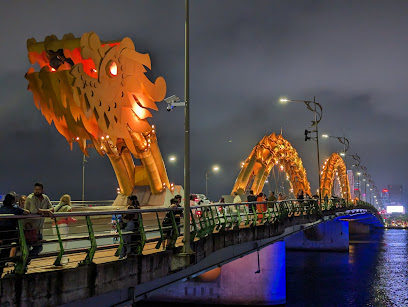
Unmissable attractions to see
The Marble Mountains
Discover the mystical allure of The Marble Mountains, a natural paradise filled with spiritual sites and breathtaking views in Da Nang, Vietnam.

DA NANG DOWNTOWN
Experience family fun and cultural wonders at Da Nang Downtown, a vibrant theme park in the heart of Vietnam's scenic city.

CauTinhYeu
Discover the serene beauty of CauTinhYeu, a must-visit tourist attraction in Da Nang that perfectly blends nature and culture for an unforgettable experience.

Đà Nẵng Museum
Discover the fascinating history and culture of Da Nang at the Đà Nẵng Museum, a must-visit destination for travelers seeking to explore Vietnam's rich heritage.
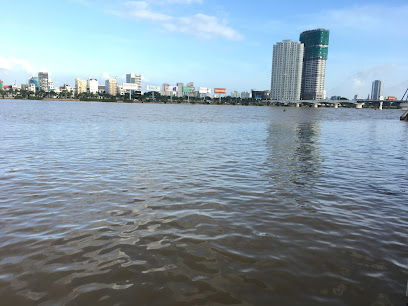
Da Nang Fresco Village
Discover Da Nang Fresco Village, a vibrant artistic hub where local culture and stunning street art come alive in the heart of Da Nang, Vietnam.

Dragon Bridge
Discover the enchanting Dragon Bridge in Da Nang, Vietnam, where tradition meets modernity with stunning views and spectacular light shows.

Bến Du Thuyền Sông Hàn Đà Nẵng
Experience the tranquil beauty of Bến Du Thuyền Sông Hàn, a riverside gem in Da Nang perfect for relaxation, dining, and unforgettable views.
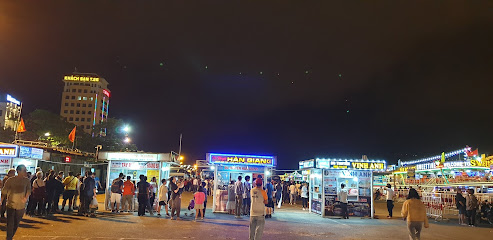
Dragon fire show
Witness the breathtaking Dragon Fire Show in Da Nang, where artistry meets pyrotechnics in a dazzling display of culture and entertainment.

Han River Bridge Viewpoint
Experience the stunning views of Da Nang from the Han River Bridge Viewpoint, a must-visit spot for breathtaking photos and serene moments.

Essential places to dine
Nhà hàng NHÀ BẾP CHỢ HÀN
Discover authentic Vietnamese cuisine at Nhà Bếp Chợ Hàn in Da Nang – where tradition meets taste in a welcoming atmosphere.
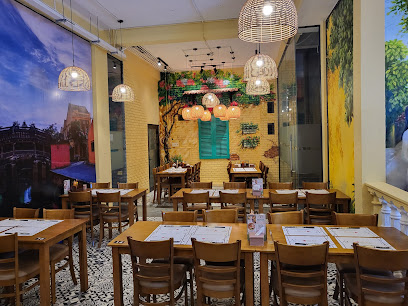
Tre Viet cuisine
Savor the authentic taste of Vietnam at Tre Viet Cuisine in Da Nang – where every dish tells a story.

LoCo Restaurant - Danang seafood restaurant - 다낭 레스토랑
Experience the vibrant flavors of Vietnam at LoCo Restaurant in Danang - your destination for fresh seafood and unforgettable dining.

Ăn Thôi Restaurant
Experience authentic Vietnamese cuisine at Ăn Thôi Restaurant in Da Nang - where every dish tells a story.

MAAZI Da Nang
Savor authentic South Indian cuisine at MAZI Da Nang - where every dish tells a story.

Luna Pub - Italian Restaurant, Beer & Cocktail Bar
Experience authentic Italian flavors with refreshing cocktails and live music at Luna Pub in Da Nang - your ultimate dining destination.

Memory Lounge
Experience exquisite dining at Memory Lounge in Da Nang with stunning river views and a menu blending local flavors with international cuisine.

Gypsy Rooftop Restaurant & Bar
Experience exquisite French cuisine and exotic cocktails at Gypsy Rooftop Restaurant & Bar in Da Nang, where stunning views meet culinary delight.

Bếp Hên Restaurant
Discover authentic Vietnamese flavors at Bếp Hên Restaurant in Da Nang - where every meal is a celebration of culinary tradition.

Nhà Hàng Si Dining
Experience exquisite Italian cuisine at Si Dining Restaurant in Da Nang - where authentic flavors meet charming ambiance.

Markets, malls and hidden boutiques
L STORE
Discover the vibrant offerings of L STORE in Da Nang, a shopping haven for unique souvenirs and local handicrafts.

Hoa Ly Shop
Explore the vibrant culture of Vietnam at Hoa Ly Shop, your go-to destination for authentic souvenirs in Da Nang.

Mono Shop
Explore the essence of Vietnam at Mono Shop in Da Nang, where unique local crafts and souvenirs await your discovery.

Cỏ May Coffee & Souvenir Shop
Discover the essence of Vietnam through exquisite coffee and authentic souvenirs at Cỏ May Coffee & Souvenir Shop in Da Nang.

Hippo shop
Explore the vibrant world of gifts and souvenirs at Hippo Shop, a gem in Da Nang, Vietnam, perfect for finding unique treasures and local crafts.

Shop Quần Áo Thời Trang DaNangSale Đà Nẵng
Explore DaNangSale, the ultimate fashion destination in Da Nang, offering stylish women's clothing, kids' wear, and accessories for every occasion.

Shop Thời Trang Mall
Explore the latest trends at Shop Thời Trang Mall, Đà Nẵng's premier clothing destination for stylish travelers seeking unique fashion.

Shop Đà Nẵng
Discover unique fashion accessories at Shop Đà Nẵng, where local craftsmanship meets contemporary style in the heart of Vietnam.

Trung Châu
Explore Trung Châu in Da Nang for unique Vietnamese gifts and souvenirs, celebrating the artistry and culture of Vietnam.

Shop Mũ LAVIE
Discover unique fashion and local crafts at Shop Mũ LAVIE, a premier shopping destination in Da Nang, Vietnam, perfect for all tourists.

Essential bars & hidden hideouts
On The Radio Bar
Discover the vibrant nightlife and live music scene at On The Radio Bar, a must-visit destination in Da Nang for tourists seeking an unforgettable experience.

Hair Of The Dog Bar Danang
Discover the energy of Da Nang's nightlife at Hair Of The Dog Bar, where vibrant cocktails meet a lively atmosphere for an unforgettable experience.

Bamboo 2 Bar
Discover Bamboo 2 Bar in Da Nang - where delicious food, refreshing drinks, and live sports come together for an unforgettable experience.

The 1920's Lounge
Discover The 1920's Lounge in Da Nang, a live music bar offering a nostalgic vibe, exquisite cocktails, and unforgettable performances.

Tê Bar
Experience the vibrant nightlife of Da Nang at Tê Bar, where expertly crafted cocktails meet stunning views and a lively atmosphere.
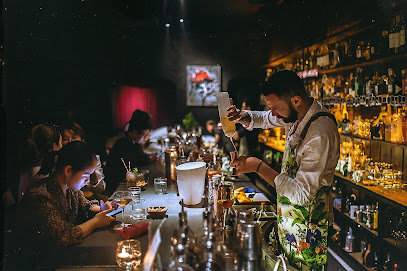
Brilliant Top Bar
Discover the vibrant nightlife and stunning views at Brilliant Top Bar, the perfect spot to enjoy cocktails overlooking Da Nang's breathtaking skyline.

The Dude Bar
Discover the vibrant nightlife at The Dude Bar in Da Nang, where creative cocktails and friendly vibes await every traveler.

LIBRE Bar DaNang
Discover LIBRE Bar DaNang, where exquisite cocktails meet the vibrant nightlife of Vietnam's coastal gem.

NYX Sky Lounge & Mixology
Experience exquisite cocktails and stunning city views at NYX Sky Lounge & Mixology, the perfect rooftop escape in Da Nang.

Dee Bar Danang
Discover the charm of Dee Bar Danang, where fine wines and a lively atmosphere create the perfect nightlife experience in Da Nang.

Local Phrases
-
- HelloXin chào
[sin chow] - GoodbyeTạm biệt
[tam byet] - YesCó
[kaw] - NoKhông
[kohng] - Please/You're welcomeXin vui lòng
[sin vui long] - Thank youCảm ơn
[kam uhn] - Excuse me/SorryXin lỗi
[sin loy] - How are you?Bạn khỏe không?
[bun khwee kohng?] - Fine. And you?Khỏe. Còn bạn?
[kwee. kawn bun?] - Do you speak English?Bạn có nói tiếng Anh không?
[bun kaw noy tyeng ang kohng?] - I don't understandTôi không hiểu
[toy kohng hyeyu]
- HelloXin chào
-
- I'd like to see the menu, pleaseTôi muốn xem thực đơn, vui lòng
[toy moon sem took dun, vwee long] - I don't eat meatTôi không ăn thịt
[toy kohng uhn tit] - Cheers!Chúc sức khỏe!
[chuck sook kwee] - I would like to pay, pleaseTôi muốn thanh toán, vui lòng
[toy moon tahn twan, vwee long]
- I'd like to see the menu, pleaseTôi muốn xem thực đơn, vui lòng
-
- Help!Cứu!
[kew] - Go away!Đi đi!
[dee dee] - Call the Police!Gọi cảnh sát!
[goy keng sat] - Call a doctor!Gọi bác sĩ!
[goy bahk see] - I'm lostTôi lạc đường
[toy lakt doong] - I'm illTôi ốm
[toy ohm]
- Help!Cứu!
-
- I'd like to buy...Tôi muốn mua...
[toy moon mwa...] - I'm just lookingTôi chỉ xem thôi
[toy chee sem toy] - How much is it?Nó giá bao nhiêu?
[no zah bao nyeu?] - That's too expensiveĐắt quá
[dat kwa] - Can you lower the price?Bạn có thể giảm giá không?
[bun kaw te zam zah kohng?]
- I'd like to buy...Tôi muốn mua...
-
- What time is it?Bây giờ là mấy giờ?
[bay zwa la may zwa?] - It's one o'clockBây giờ là một giờ
[bay zwa la moot zwa] - Half past (10)Mười giờ rưỡi
[moo-ee zwa ruh-ee] - MorningBuổi sáng
[bwow-ee sang] - AfternoonBuổi chiều
[bwow-ee ch-yew] - EveningBuổi tối
[bwow-ee toy] - YesterdayHôm qua
[hawm kwa] - TodayHôm nay
[hawm nai] - TomorrowNgày mai
[nyai my] - 1Một
[moot] - 2Hai
[high] - 3Ba
[bah] - 4Bốn
[bohn] - 5Năm
[nahm] - 6Sáu
[sow] - 7Bảy
[bay] - 8Tám
[tahm] - 9Chín
[cheen] - 10Mười
[moo-ee]
- What time is it?Bây giờ là mấy giờ?
-
- Where's a/the...?Chỗ...ở đâu?
[chaw...uh doh?] - What's the address?Địa chỉ là gì?
[dee-ah chee la zee?] - Can you show me (on the map)?Bạn có thể chỉ cho tôi (trên bản đồ) không?
[bun kaw te chee chaw toy (tr-un bawn doh) kohng?] - When's the next (bus)?Xe buýt tiếp theo khi nào?
[say buht teep the-oh kee now?] - A ticket (to ....)Vé (đến ....)
[vay (den ....)]
- Where's a/the...?Chỗ...ở đâu?
History of Hai Chau District
-
Hai Chau District, situated in the heart of Da Nang, has its roots in the ancient Champa civilization, which flourished from the 2nd to the 15th centuries. The Cham people established trade routes and settlements along the coast, with Hai Chau being a significant location for commerce and cultural exchange. The remnants of Cham architecture, such as the Linh Ung Pagoda, reflect this rich heritage.
-
During the French colonial period in the late 19th and early 20th centuries, Hai Chau District underwent significant urbanization. The French established infrastructure, including roads and buildings, which transformed the area into a bustling urban center. Notable structures from this era include the Da Nang Cathedral, completed in 1923, showcasing Gothic architectural influences.
-
The Vietnam War brought considerable turmoil to Hai Chau District, as Da Nang was a major military base for U.S. forces. The district experienced heavy bombing and destruction, which affected its historical sites and local communities. Post-war recovery efforts focused on rebuilding and restoring the area, leading to the development of new infrastructure and residential areas.
-
In the late 20th and early 21st centuries, Hai Chau District has seen rapid modernization and economic growth. As Da Nang emerged as a key tourist destination, the district adapted to meet the demands of increased tourism. New hotels, restaurants, and cultural attractions have been developed, including the famous Han River Bridge, enhancing the district's appeal.
-
Today, Hai Chau District is a vibrant blend of historical influences and modern culture. The district hosts various cultural festivals and events, celebrating both its Cham heritage and contemporary Vietnamese identity. The annual Da Nang International Fireworks Festival is a prime example, drawing visitors from around the world and showcasing the district's dynamic spirit.
Hai Chau District Essentials
-
Hai Chau District is centrally located in Da Nang, making it easily accessible from other neighborhoods. You can reach it by taxi or rideshare services like Grab, which are widely used and affordable. If you're coming from Da Nang International Airport, a taxi ride will take around 10-15 minutes. Additionally, public buses operate routes that connect to Hai Chau, providing a budget-friendly option for travelers.
-
Hai Chau District is best explored on foot, especially its bustling streets and markets. For longer distances, you can use local buses, which are affordable and cover various routes within the district. Bicycles are also available for rent, allowing you to enjoy the city at your own pace. Motorbike rentals are common and provide a convenient way to navigate the area, but be sure to wear a helmet and follow local traffic rules.
-
Hai Chau District is generally safe for tourists, but standard precautions should be taken. Avoid walking alone late at night in poorly lit areas, particularly around parks or less populated streets. Petty crimes like pickpocketing can occur in crowded areas, so keep your belongings secure. While there are no specific high-crime areas targeting tourists, areas near the Han River can be less populated at night.
-
In case of an emergency, dial 113 for police, 114 for fire, and 115 for medical assistance. Local hospitals are equipped to handle emergencies, with the Da Nang Hospital being one of the larger facilities. It is advisable to have travel insurance that covers medical emergencies. Pharmacies are readily available for minor health needs, and many staff members speak some English.
-
Fashion: Do dress modestly, particularly when visiting temples or pagodas, and avoid overly revealing clothing. Religion: Do be respectful of local customs; remove your shoes when entering homes or temples. Public Transport: Do offer your seat to the elderly or pregnant women, and don't eat or drink on public transport. Greetings: Do greet with a smile and a nod; a handshake is also acceptable. Eating & Drinking: Do try local dishes and accept food offers graciously, but don't waste food or leave the table before everyone is finished.
-
To experience Hai Chau District like a local, visit the Han Market for fresh produce and local delicacies. Engage with vendors, as many are happy to share their stories. Explore the local cafes where you can try traditional Vietnamese coffee. Don't miss the chance to stroll along the Han River at sunset for stunning views. Join a cooking class to learn about Vietnamese cuisine and culture firsthand.
Nearby Cities to Hai Chau District
-
Things To Do in Hoi An
-
Things To Do in Tam Ky
-
Things To Do in Hue
-
Things To Do in Quy Nhon
-
Things To Do in Pakse
-
Things To Do in Champasak
-
Things To Do in Ubon Ratchathani
-
Things To Do in Savannakhet
-
Things To Do in Buon Ma Thuot
-
Things To Do in Thakhek
-
Things To Do in Nha Trang
-
Things To Do in Dalat
-
Things To Do in Kratie
-
Things To Do in Siem Reap
-
Things To Do in Ha Long











